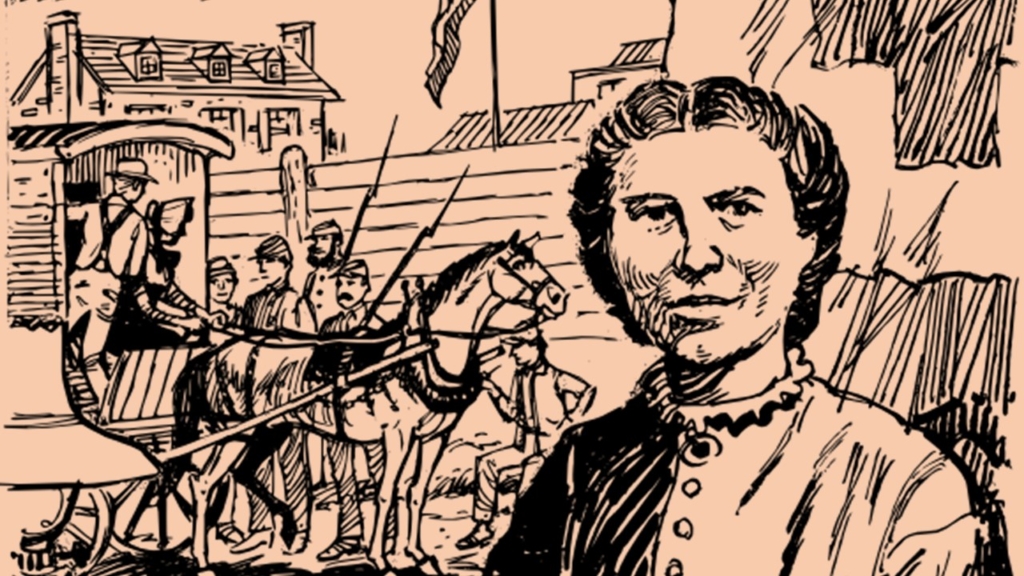Dawn, The Review, May 15-21, 1997
 History is a record of events. But there is a trap. The events recorded in history have been recorded by men, since most of the historians were males, with a few rare exceptions such as Gulbadan Begum, the author of Humayun Nameh.
History is a record of events. But there is a trap. The events recorded in history have been recorded by men, since most of the historians were males, with a few rare exceptions such as Gulbadan Begum, the author of Humayun Nameh.
History has been written primarily for men, since more often than not, formal systems of education were restricted to male candidates only. Consequently, the events recorded in history were those which were of major concern to men. There was little or no place for things belonging to the so-called “feminine domain” of life, since those things were considered trivial, obscure and unworthy of men.
Over two centuries of feminism, the reading of history has also changed (perhaps a bit too slowly, though). In the process, the feminist historiography has passed through three distinct phases.
Women of history
The First Wave feminists were basically fighting for equal votes. It suited them well to quote examples of “women worthies” from the past: if women have ruled countries in the past, like Elizabeth I and Catherine of Russia, why can’t they be accorded votes now? Foremost among the early feminist historians was Matilda J. Gage (1826-98), whose principle works include Woman, Church and State (1893).
Gerda Lerner has called this kind of history-writing “compensatory history.” This was neither limited to the nineteenth century Europe and America nor was it an invention of Gage. The compensatory history is a widespread approach, often used by those who wish to bring any improvement to the plight of women. From our own culture we may recall the reformist novel Mirat-ul-Uroos by Nazir Ahmed Dehlvi, which includes references to Razia Sultan, Nurjehan and Queen Victoria to support the argument that women also have a past to play in the advancement of civilization. Likewise, there have been books about “women worthies” from different walks of life such as literature, hadith, and so on.
There is another, more interesting dimension to this compensatory history: women who were well-known and influential in their own times but were forgotten by the latter historians. Research in this direction comprises digging out information about firefly-mentioned womrn from old history books, and then re-assessing their careers. A recent addition to this category is Fatima Mernissi’s Hidden From History: The Forgotten Queens of Islam.
However, this is not enough. While compensatory history does some service by giving us more details of the significant women of history, it does not answer an important question: what were all those other women doing all this time?
We know that the stories of ‘women worthies’ can be gravely misleading. Seeing a woman on the throne of the nineteenth century England we may entirely forget that women in that same country, under that same queen, did not have the right to vote – and those who asked for it faced much hostility. In our own land, and in our own times, the fact that we elected a woman prime minister for the first time in the Muslim World does not necessarily mean that the plight of the women in our land, in general, has improved.
Some feminists even argue that such examples are quite often cases of ‘tokenism’ – where patriarchy bestows honorary power to a woman ‘as a token’, because it has no real threat from the woman as long as everything else in the structure remains in the control of men.
There is one more trap. Some of the ‘women worthies’ are known to have adapted themselves to the roles of men: Mrs Margaret Thatcher was actually accepted as an ‘honorary man’ by an elitist club in Britain which restricted its membership to men only. And the policies of Mrs Thatcher with regards to women were no different from those of her male predecessors (only more “chauvinistic”, some feminists maintain!)
Women in history
Mary R. Beard (1876-1958), the inventor of the concept of Women’s Studies, was seventy when she produced her ground-breaking work Women As Force in History. In this she argued that women were not the subjected race, as maintained by some other feminist historians (and as propounded three years later by Simon de Beauvoir in The Second Sex). Perhaps there was a political motive for refuting “the dogma of woman’s complete historic subjection to men.” For, if this was truly the position of women in history, then the male historian was not at fault in leaving them out of his writing.
On the contrary, what Mary Beard desired was that “the personalities, interests, ideas and activities of women must receive an attention commensurate with their energy in history.” She believed that women were a force in history, and she conceded this force generally as a civilizing mission. She accused that being men, as a rule the historians tend to confine their research to their own sex in history and almost completely ignore the role played by the multitudes of women who have lived on ths planet.
It must be kept in mind that this was a period when the Marxist historians had already produced volumes on the contribution of the invisible, ordinary masses in the making of history. They had successfully shifted the gaze of the reader away from the dignified commander in the battlefield to the unknown thousands of soldiers lying in the dust; from the divine pharaoh buried in the pyramid to the nameless, faceless slaves who helped build it; from the celebrated poet wearing a laurel crown to the non-creative, non-productive audience whose approval had raised the poet to his ranks of everlasting glory. But even while doing so, even the Marxist historians had focused primarily on the men who fought the battles, the men who toiled to build the pyramid, the men who cheered the poets. What Mary Beard was now demanding was that women should also be mentioned, since they had also been there: looking after children when the men went away to bring glory, carrying their share of the load under the scorching heat of the Egyptian sun, passing on the words of great wisdom to their children and grandchildren lest they may be forgotten.
Gerda Lerner calls it “contribution history.” Books written with this approach usually highlight the role of women in well-known historical events. The titles are like The Role of Women in the Freedom Movement, Women and the French Revolution, etc. This approach has proved more useful than the first one. Now we know that in times of stress and grave danger (such as foreign aggression), patriarchies generally encourage their women to come forward and participate in national activity (as happened in the subcontinent during the freedom movement of the 1940’s), but the same women are forced back and asked to restrict themselves once the goals have been achieved (as we have seenin Pakistan since 1947). These and other historical principles, which now form the basis of so many studies, have only been discovered through the work of contribution historians. Incidentally, Women Of Pakistan by Fareeda Shaheed and Khawar Mumtaz is a good example of contribution history from our part of the world.
There is, however, one shortcoming to this approach. It studies the contribution of women mainly in areas which are essentially ‘male-defined’ without going further to see whether these areas were really equally important for women. Hence, you can study the role of women in the freedom movement without posing the real question: Was the so-called ‘freedom’ an important happening in women’s life? Did it really mean freedom to women as it did to men who gave it the name?
Also, we go on discussing women as “Women in the Mughal Period”, but the real issue to consider is this: should women’s history be divided according to the Sultanate period, Mughal period, and so on, when we know that these periods merely signify a change in the line of kings, who were, as a rule, men. The contribution history at its best is an appendix to the political history. The real question to be asked is the one which lies outside its boundaries: is there another kind of history?
Women’s history
The Second Wave Feminism (beginning around the 1960s) gave rise to certain radical questions which had never been asked before: why does a society stop women from being the masters of their own bodies? How does it do that? What are the tools of oppression used to curtail women’s independence? Women wanted these questions to be answered, and the history (including that written by the feminists so far) failed to provide the answers. It was Gerda Lerner (b. 1920) whose seminal work Placing Women in History (developed into a full book in 1977) laid the foundations of a new history; a women’s history. A women’s history is different from ‘the other’ history on many accounts.
(1) The men’s historians have been obsessed by the question ‘who wields the power?’ They have also claimed to be preoccupied with the processes of change in society.
For writing a women’s history, Gerda Lerner advised to begin by adding “some new categories to the general categories by which historians organize their material: sexuality, reproduction, the link between child-bearing and child-rearing; role indoctrination; sexual values and myths; female consciousness… All these need to be analysed taking factors of race, class, ethnicity, and possibly religion into consideration.”
Hilda Smith, another feminist historian, says: “what we must do, then is … to pose questions and develop hypotheses which take into account the specially restricted life women have been encouraged to follow”.
(2) The primary scenes of action in men’s history were the courts, the markets and the universities. Women’s history goes beyond. It looks into homes and backyards to count the hands that rocked the cradles, the hands that produced the goods without putting their brand marks on them, and the hands that turned the leafs of the classics or scribbled their own interesting accounts without ever getting acknowledged for any of these activities. Thanks to the works of modern feminist historians (and anthropologists) we now see the likelihood of women being the inventors of agriculture and tailoring in the stone age, and thus being the founders of civilization.
(3) History written by men is divided into periods (such as Middle Ages, Renaissance, Enlightenment or Sultanate, Mughal, Colonial). This periodisation is also male-centred: Renaissance is celebrated as re-birth of learning while the fact is that women in that age were deprived even of what ever opportunities of learning they used to have in the earlier times. Modern feminist historians suggest that history should be divided into periods according to the effects on the lives of women. This is the most crucial point of departure.
(4) Women’s historians look into sources which are often ignored by other historians: women’s letters, diaries, autobiographies, hospital and church records, and oral history sources.
Rosalind Mile’s Women’s History of the World is a major work in this category. Unfortunately, this approach has not been taken up by many historians in Pakistan and India where most feminist histories still belong to the first two categories (compensatory history and contribution history). Malavika Karlekar’s Voices from Within (1991) is one valuable exception. It is an anthropological study of 19th and early 20th century Bengal primarily based on ‘early personal narratives of Bengali women.’
It may be asked at this point: why make all this fuss? Wouldn’t it look ridiculous to replace the issues of kings, merchants and scholars with the petty lives of housewives, old maids and prostitutes? How can such a history be worth reading at all?
The objection is preempted by Gerda Lerner. The answer comes in her classic, oft-quoted line: “… the key to understanding women’s history is in accepting — painful though that may be — that it is the history of the majority of the humankind.”
However, the point remains that even if we accept women’s history as a history of the majority, it still cannot be complete – what about the “minority”? By leaving out men from their study, the feminist historians will commit the same mistake of which they have accused the male-centred historians.
Gerda Lerner is the first to realize this. She admits that ‘Women’s History’ is transitional history. It is important to work on it now. Once we’ve got enough material in hand, we shall be able to move on to the ultimate stage.
4. The universal history: None of the histories written so far is a truly universal history, nor is it possible to write one just now. A truly universal history will be a meaningful combination of the newly discovered women’s history with the time-worn men’s history.
It pre-requires “synthesis: a history of the dialectic, the tensions between the two cultures, male and female,” writes Lerner. “Only after a series of such detailed studies can we find the parameters by which to define the new universal history. My guess is that no one conceptual framework will fit so complex a subject.”
 This articles is part of the series “Women Studies”: Let’s say no to a peurile feminism | Women and cinema in Pakistan | Women as prophets in the Quran | A woman’s Islam? | Gender roles in education | Women’s right to divorce in Islam | Liberty, equality, fraternity | In religion’s wake | ‘Men are from Mars, women are from Venus … no more’ | ‘History, she wrote’ | ‘Debunking myths‘ | Women in the Quran | Portrayal of women in the stories of Sadat Hasan Manto
This articles is part of the series “Women Studies”: Let’s say no to a peurile feminism | Women and cinema in Pakistan | Women as prophets in the Quran | A woman’s Islam? | Gender roles in education | Women’s right to divorce in Islam | Liberty, equality, fraternity | In religion’s wake | ‘Men are from Mars, women are from Venus … no more’ | ‘History, she wrote’ | ‘Debunking myths‘ | Women in the Quran | Portrayal of women in the stories of Sadat Hasan Manto
